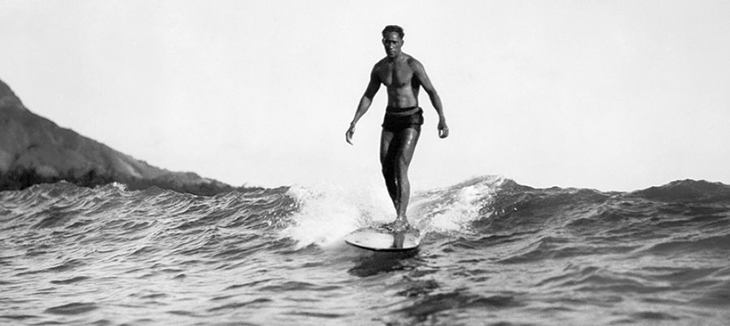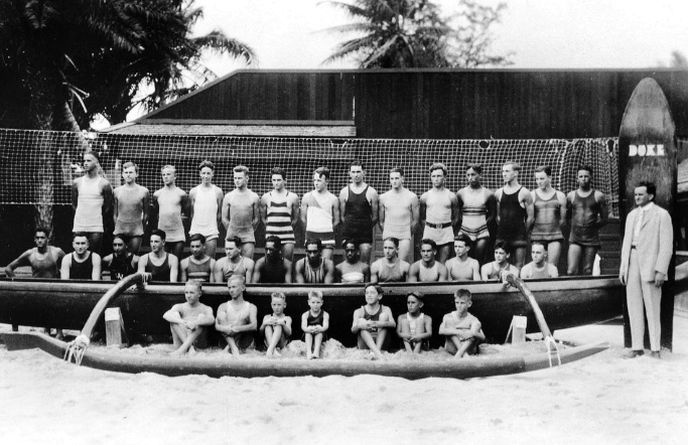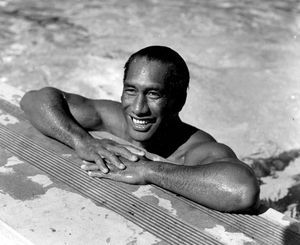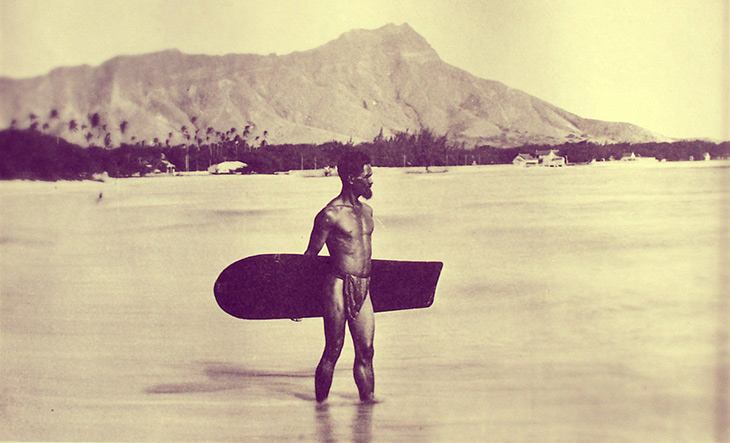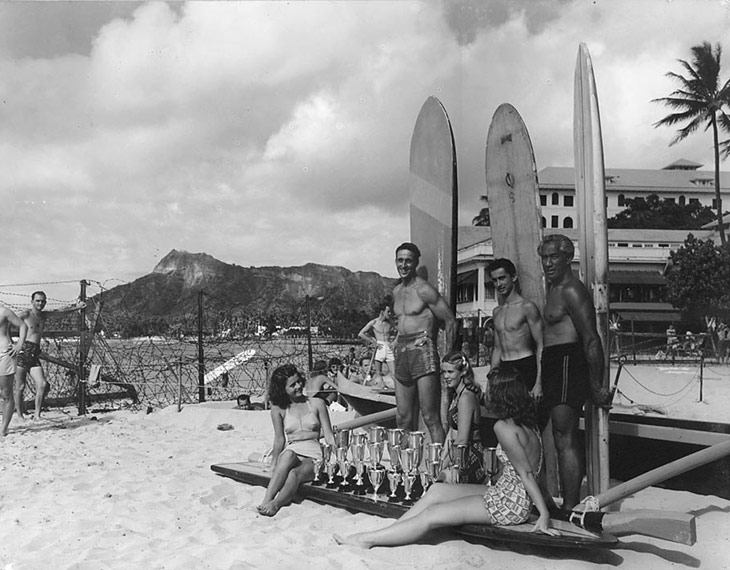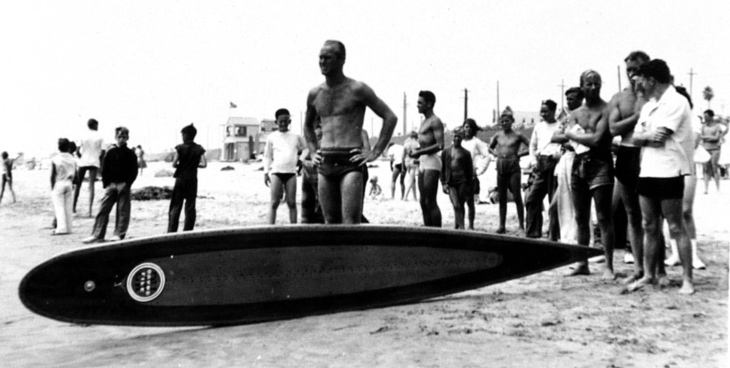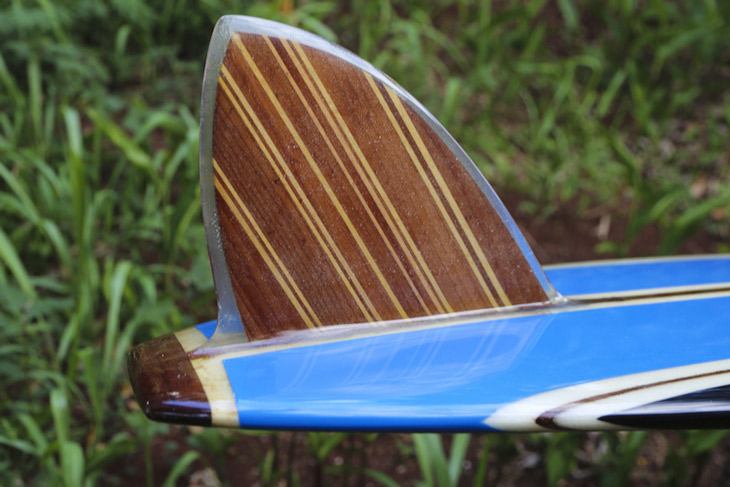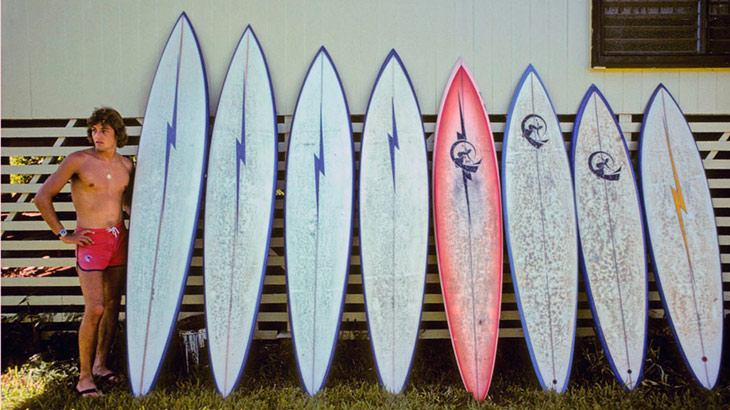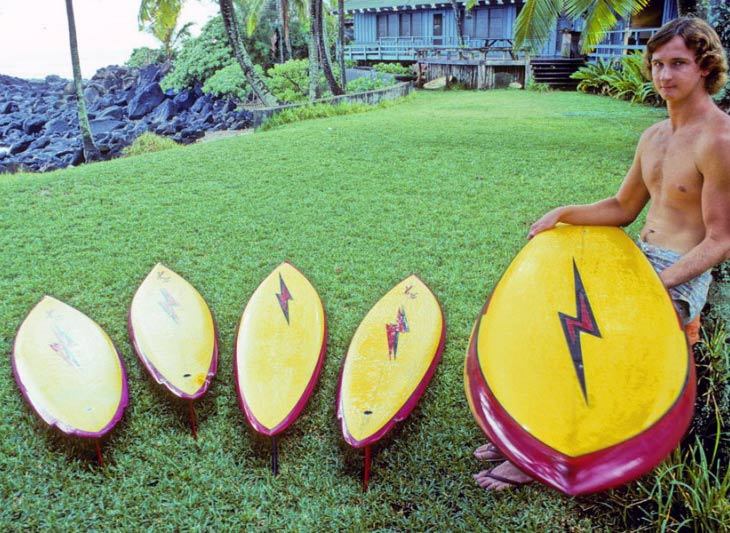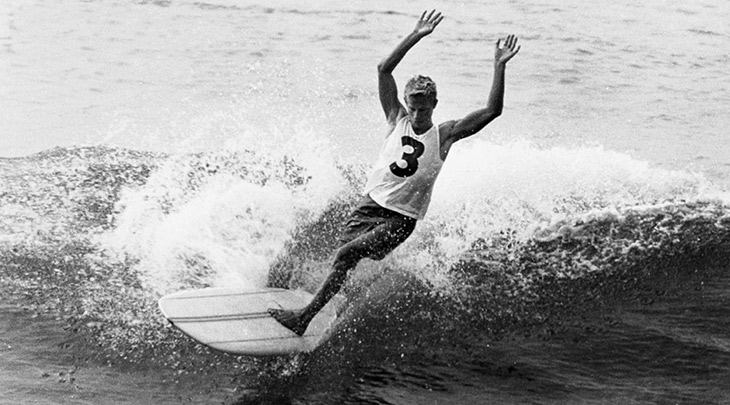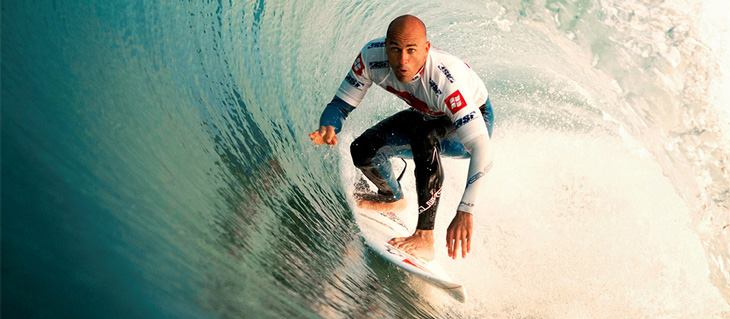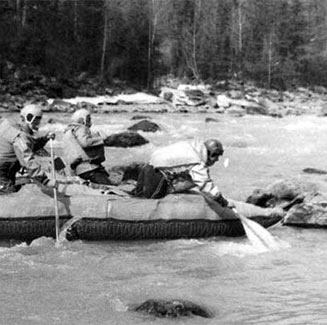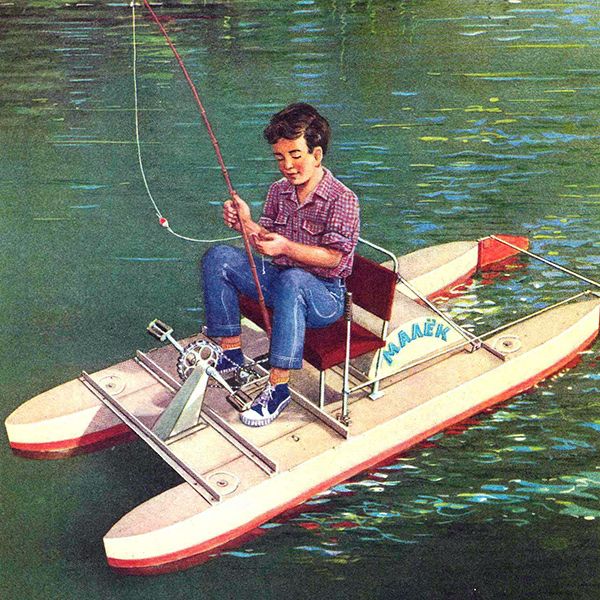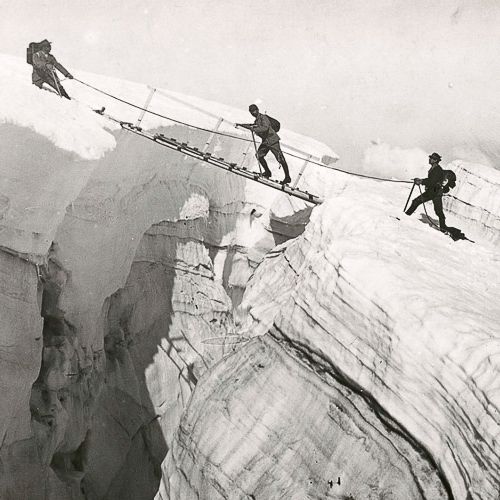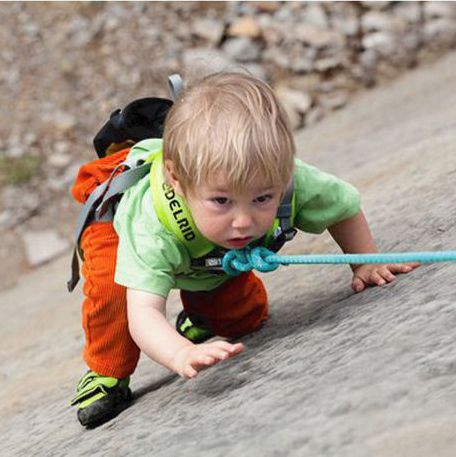The history of surfing is truly fascinating. A sport that dates back centuries nearly disappeared, only to be revived in the 20th century and embraced by millions.
Captain James Cook described how, in 1777, Polynesians tied tree trunks together to surf waves. In Hawaii, centuries ago, riding the waves on handmade boards was a pastime for both commoners and the royal family.
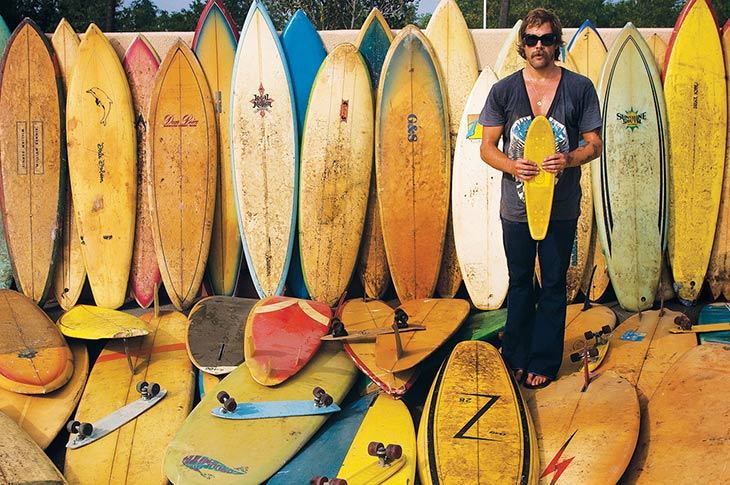 Donavon Frankenreiter - surfer and musician.
Donavon Frankenreiter - surfer and musician.
Surfing prowess elevated a ruler’s status. Competitions were held during religious festivals, and good waves were summoned by traditional chants and rituals.
In his book Roughing It, Mark Twain described the expert wave-riding on short boards performed by naked natives of all ages and genders. The technology of crafting solid wooden boards was an art form: special types of wood, paints, and treatments were used. The work was accompanied by religious ceremonies. Boards for nobles were heavy—up to 100 kg, and up to six meters long—while commoners had to make do with shorter boards weighing up to 10 kg. The Hawaiian tradition of giving names to waves also began during this time. However, due to the colonization of the islands in the 19th century, surfing fell into decline and was nearly forgotten.
Surfing Revival
In 1907, writer Jack London, journalist Alexander Hume Ford, and surfer George Freeth, a nephew of a Hawaiian prince, met in Honolulu. This trio took a serious interest in reviving the ancient activity.
In his essay A Royal Sport: Surfing in Waikiki, London enthusiastically described riding waves with his new friends. Hume Ford proved to be a great organizer, initiating a revival of surfing on Waikiki Beach: surf clubs started offering lessons, board rentals, and organized competitions.
By 1915, the Hawaiian Outrigger Canoe Club had over 1,200 members.
Riding an inherited board, Freeth learned to surf standing up, “like royalty,” and soon became the best surfer on Waikiki Beach.
He was invited to demonstrate surfing at the opening ceremony of a railroad line in Southern California. His performance was a sensation. Dubbed the “man who walks on water,” Freeth stayed in the U.S., working as a lifeguard and rescuing 78 lives in the process. Simultaneously, he experimented with board sizes, cutting five-meter boards in half.
Duke Kahanamoku: Early Surfing Superstar
One of the first to popularize Hawaiian surfing in mainland America was Duke Kahanamoku. Born in 1890 in Honolulu, this American swimmer won five Olympic medals and spent his free time riding waves and acting in movies.
He rode five-meter-long wooden boards weighing 52 kg, reminiscent of ancient Hawaiian boards. These boards glided mostly in straight lines, were difficult to steer, and slipped off waves higher than two meters. Turns were hard to execute and required using a foot for extra drag.
Kahanamoku’s sensational surfing demonstrations, which drew large crowds, were held around the world. On one occasion, he even shared a board with a woman. Following his sports shows, surfing began to develop in Australia and New Zealand.
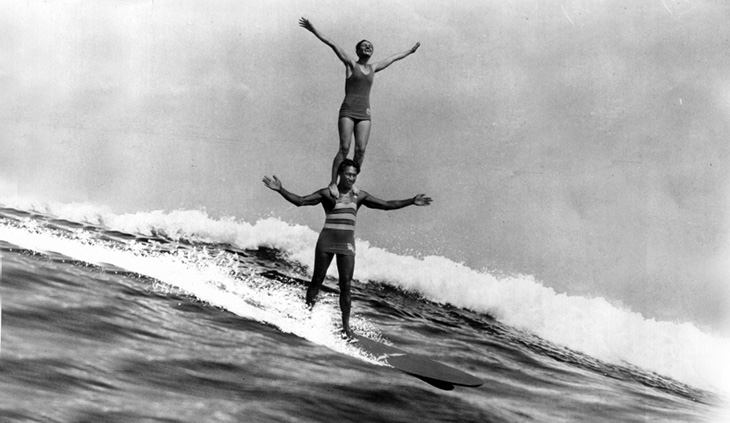 Kahanamoku and Viola Kydd surfing at Laguna Beach, 1925, during the filming of 'Viola-Diving Wonder'
Kahanamoku and Viola Kydd surfing at Laguna Beach, 1925, during the filming of 'Viola-Diving Wonder'
By the 1920s, surfing was attracting more and more fans along Southern California’s coast, from San Diego to Malibu. A new lifestyle centered around the beach emerged. Hawaiian elements became fashionable: colorful shirts, small ukuleles, and tiki huts. However, surfers were often stereotyped as beach bums.
Tom Blake and the Cigar Box
The first to ride the waves of Malibu was Californian surfer Tom Blake. He spearheaded a technological revolution in board construction by building long boards known as “Cigar Box.”
These were hollow boards with internal crossbeams and ribs, reducing the weight of the equipment from 70 kg to 27 kg. Blake broke records and won Pacific Coast Surfboard championships, which he organized himself, though it took him time to overcome prejudice against his innovative designs.
 'Tom Blake's Cigar Box'
In 1930, he received the first patent in history for a hollow board. The fin he invented, attached to the bottom, added maneuverability and stability during turns, allowing surfers to perform tricks.
'Tom Blake's Cigar Box'
In 1930, he received the first patent in history for a hollow board. The fin he invented, attached to the bottom, added maneuverability and stability during turns, allowing surfers to perform tricks.
Evolution of the Surfboard
A brief overview of “board evolution” and the development of the surfboard starting from the late 19th century.
Paipo prior to 1900 is considered the starting point for surfboards. The indigenous people used it lying on their stomachs or on their knees. The length of the Paipo ranged from 3 to 6 feet, and they were originally made of breadfruit tree wood. The Paipo surfboard is recognized as a classic surfing tool of the native Hawaiians.
Alaia and Olo are another example of boards created on the eve of the 20th century. They were made of the rare Koa wood. The length of the Alaia ranged from 5 to 15 feet, while Olo ranged from 10 to 24 feet. These were the first boards used for standing surfing. Some weighed over 90 kg and were ridden by Hawaiian royalty.
Duke Kahanamoku’s Classic Board became legendary in the 1920s. This blunt-nosed, heavy, long board with a squared-off tail was made of redwood.
In 1937, one Hawaiian teenager invented a V-shaped tail design for the board. This innovation helped surfers better grip the wave wall and allowed for sharper turns. Pete Peterson discovered ultra-lightweight boards in Hawaii that weighed only 14–18 kg. These were carved from balsa wood, which was extremely lightweight, soft, and buoyant when dry.
Whitey Harrison designed a board model in 1937. These lightweight, maneuverable boards opened up new opportunities for gliding on tall waves, refining techniques, and inventing tricks. Surfing gradually transformed from a leisure activity into a competition of agility and skill, gaining more spectacle and competitive edge.
Tom Blake’s Hollow Paddle-board (1940) with a fin was revolutionary for its time, acting as a transitional design between solid planks and modern lightweight boards made from composite materials. The hollow structure reduced the board’s weight. This was the first board to feature a fin; prior to fins, controlling surfboards was only possible through paddling.
Bob Simmons’ Surfboard (1950) was the first hybrid design. Created using balsa wood and fiberglass, it utilized cutting-edge marine architecture technologies of the time. Lightweight and highly maneuverable, Simmons’ board paved the way for modern surfboards.
Hobie Longboard from the 60s helped shape the course of modern developments. Hobie and his partners were the first to mass-produce surfboards made from balsa wood, showing that this was a sought-after product with immense development potential.
Lightning Bolt (1970s) created by “Mr. Pipeline” Gerry Lopez. It was the most high-performance board of its time. It revolutionized the sport, allowing surfers to perform previously unthinkable maneuvers and ride waves that were once beyond imagination. This board marked the beginning of the art of surfboard painting and a unique aesthetic that remains alive today.
MR Twin Fin (late 70s) was introduced by Mark Richards, forever changing the course of surfing. A new style of agile and fast surfing became possible thanks to the added fins. This innovation cemented surfing as one of the most competitive extreme water sports.
Famous Surfers
In search of exciting waves, young people from Honolulu — John Kelly , Wally Froiseth, and Fran Heath — set up camp in 1937 on the western coast of Oahu Island, at Makaha surf spot. Waking up in the morning, they saw massive wave crests crashing against the reefs.
The spot was active with waves starting at 3 meters, and occasionally swells reaching 6–9 meters would roll in. The boys spent up to 10 hours daily in the water, surviving on coconuts, fish, and lobsters they caught. They enthusiastically mastered the art of riding big waves.
George Downing
The first serious wave researcher was George Downing, born in Honolulu in 1930. He began surfing at the age of 9.
In the post-war years, at Makaha Bay, he documented swell dynamics, the number of waves in a set, intervals between waves, and studied how weather impacted storms, similar to those in Britain . During calm weather, he explored the seabed with a mask and snorkel.
In 1947, he traveled to California where he learned about new materials like fiberglass, foam, and resin — a result of chemical technology breakthroughs during the war.
In 1950, Downing crafted a fundamentally new board, the Rocket, measuring 3 meters in length with a large removable fin for added stability.
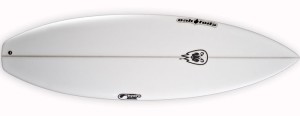 The 'Rocket' Surfboard Model
This opened new opportunities for conquering
giant waves in the ocean
.
The 'Rocket' Surfboard Model
This opened new opportunities for conquering
giant waves in the ocean
.
While riding the “Rocket” off the coast of Makaha, George and his friends “took” waves reaching heights of 6 meters, then 9 meters. News of this and photos of the guys on 5-meter-high waves became a sensation for California’s extreme sports enthusiasts, sparking a migration to Hawaii.
Downing triumphed three times at the Makaha International Championship in the 1950s–1960s, becoming an outstanding coach, competition organizer, and ocean advocate.
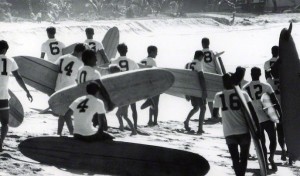 Makaha International Competition
Makaha International Competition
At the start of the 1950s, the camp at Makaha transformed: Californian and local surfers built framed houses and huts here. The spot was active only occasionally, prompting surfers to explore new territories, eventually discovering the northern coast. In 1957, Greg Noll and his friends rode the waves at Waimea Bay for the first time. In the years that followed, the spot, with its 8-meter waves, became the epicenter of big wave surfing, akin to Ireland’s spots , and triggered a new wave of extreme sports migration—to the northern coast.
Greg Noll
Greg was born in 1937. As a schoolboy, he made annual trips to surf in Hawaii and moved there in 1954. On the water, he was easily recognized by his black-and-white horizontally striped shorts.
Conqueror of colossal waves at Makaha, Waimea, and Banzai Pipeline, the Californian is recognized as an outstanding record-holder in the history of surfing. In an effort to perfect surfboards, he started his own manufacture in the 1950s.
The great athlete now resides in California, crafting 12 rare custom boards by hand each year. In 2004, a film about the legendary athlete and other big wave riders, one of the best surfing movies , Riding Giants, was released.
1950s-60s: The “Golden Decade” of Surfing
Commercial production and the affordability of surfboards expanded the sport’s audience, making surfing less exotic. Professional photography and water-based filming contributed further to its popularity.
The 1950s–1960s are often referred to as the “golden age” of this extreme sport. The book Gidget by Frederick Kohner and the movie of the same name played a significant role in this, portraying surfing as a romantic world where beautiful young people surf, dance, and fall in love. The book and film emerged in the late 1950s, and their wild popularity led to a 20-fold increase in the number of surfers in California.
By 1962, the number of surfers had reached 100,000. Waves of extreme sports enthusiasts swarmed beaches in South America, Europe, Africa, and Australia—everywhere suitable waves could be found. A string of documentary films followed, with their protagonists becoming sports idols.
The surfing lifestyle inspired a new music genre—surf rock. A distinct style and surfer image emerged: sun-bleached hair, unique slang, loose-fitting white Levi’s jeans, checkered Pendleton shirts over T-shirts, and Mexican Huarache sandals. Surfing became a symbol of a free-spirited life.
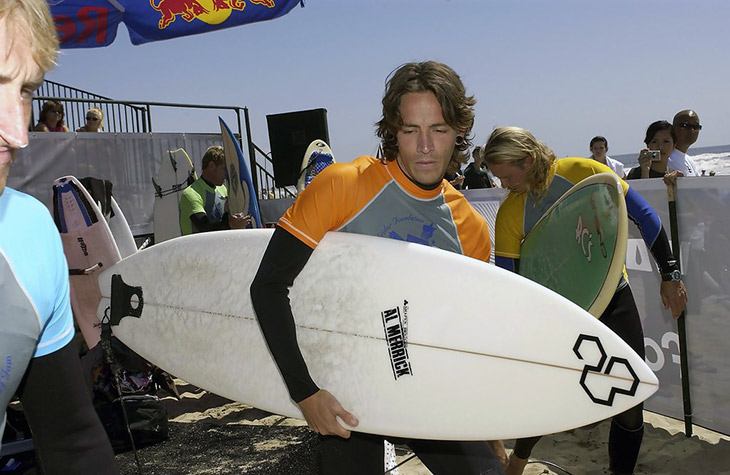 Brandon Boyd of 'Incubus' with his surfboard
Brandon Boyd of 'Incubus' with his surfboard
The Surf Industry and New Riding Styles
The surf industry grew rapidly. Specialized stores opened, and magazines like Surfing and The Surfer began publication. By the 1970s, brands like Billabong, O’Neill, and Quiksilver were gaining momentum. Jack O’Neill invented the wetsuit, granting surfers access to cold waters.
By the late 1960s, experiments with materials and technology led to shorter boards, down to 1.8 meters, for increased speed and maneuverability. These lightweight and short boards—shortboards—ushered in a more dynamic riding style.
In 1971, the leash (leg rope) was invented, preventing surfers from losing their board.
Windsurfing emerged, along with acrobatic surfing featuring sharp turns and tricks. Hawaiian Rabbit Kekai invented “hot-dog surfing,” which involved boards for small waves. Surfers continued seeking out new waves. In the 1970s, Jerry Lopez dominated at Bonzai Pipeline.
At Sunset Beach, the leaders were Jeff Hakman and Barry Kanaiaupuni. By the mid-1980s, new champions like Jeff Clark, Ken Bradshaw, and Mark Foo took the reins. In the 1990s, Laird Hamilton and Ken Bradshaw introduced tow-in surfing, where jetskis transported surfers to the crests of towering waves.
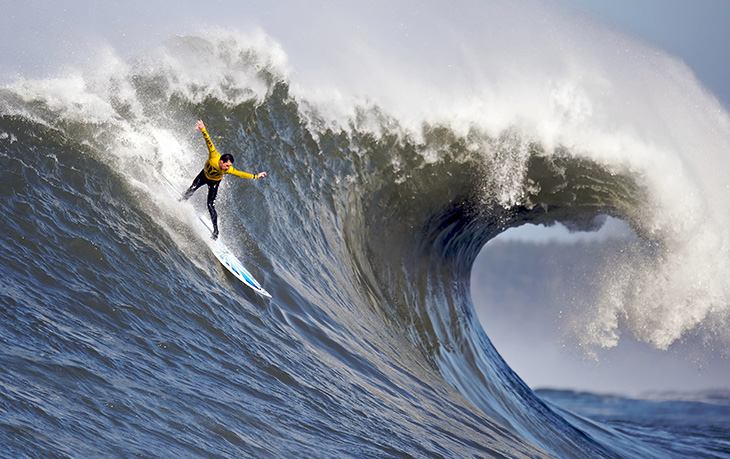 Record-breaking wave heights conquered
Record-breaking wave heights conquered
Boards were shortened further, to lengths of just 1 meter, and fitted with foot straps, helping to improve speed and control turbulence. Surfing evolved into a team sport. This innovation enabled surfers to conquer waves over 20 meters high.
The Birth of Professional Surfing
Scattered amateur competitions came together in 1976 to form the global tour IPS – International Professional Surfers, which was rebranded as ASP – Association of Surfing Professionals in 1983. Tour stops were held in various countries.
Since 1977, women have also been competing professionally. Australian Layne Beachley won seven world surfing titles, six of them consecutively. Australian Mark Richards won four world championships.
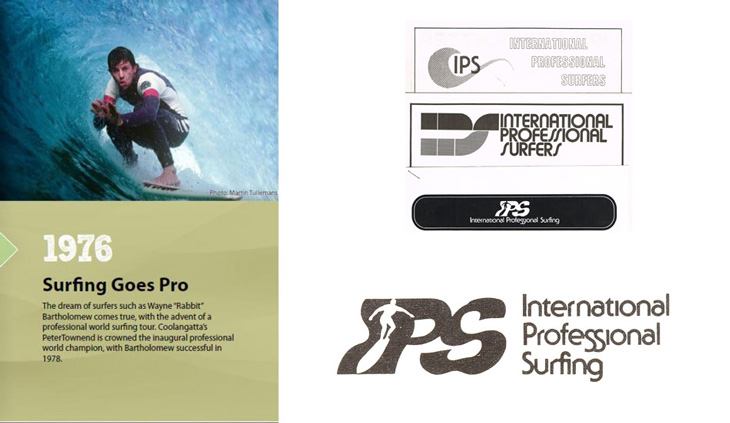 The birth of professional surfing
In the 1980s, the tour brought together about 20 international contests, and this number eventually grew to 60. The involvement of sponsors increased the prize pool for the championships.
The birth of professional surfing
In the 1980s, the tour brought together about 20 international contests, and this number eventually grew to 60. The involvement of sponsors increased the prize pool for the championships.
The most decorated modern surfer, Kelly Slater, was born in 1972 in Florida. He started winning as a teenager and became a world champion 11 times between the 1990s and 2000s! In total, Slater has achieved over 50 victories. The rider enriched surfing with many new techniques and tricks, including those from skateboarding, making the sport more spectacular.
The blue-eyed athletic heartthrob appeared in 35 films and became a cult figure. Absolute dominance in one of the most challenging sports for 20 years is unprecedented in surfing history!
Today, the ASP organizes competitions in categories such as masters, longboard, juniors—at the best surf spots with quality waves, like Peniche or Algarve, Portugal . The prize pool reaches up to $400,000 for a stage victory and up to $4 million for the championship title. Globally, surfing-related products generate $1.5 billion annually, and about 75 magazines are published. The army of wave conquerors reaches 20 million people.
